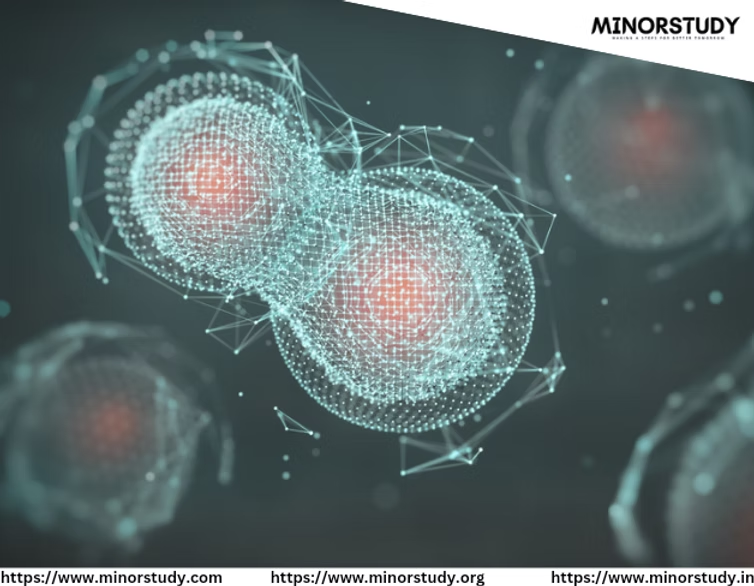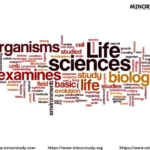Minor in Bioinformatics
Faculty: Computer Science, Science Type: Minor
Bioinformatics: The Minor in Bioinformatics combines computational methods with biological data to understand complex biological systems. Bioinformatics is an interdisciplinary field that applies techniques from computer science, statistics, and mathematics to analyze biological data, particularly large-scale data sets such as genomic sequences. This minor equips students with the skills needed to work in fields like genetics, genomics, and biotechnology, where vast amounts of biological data need to be processed, interpreted, and analyzed.
Key Learning Outcomes
Understanding of Bioinformatics Tools: Gain proficiency in using software and computational tools designed for analyzing biological data.
Data Analysis Skills: Learn to process, analyze, and interpret large biological datasets, such as DNA sequences or protein structures.
Molecular Biology Knowledge: Develop an understanding of molecular biology concepts, which are essential for interpreting biological data.
Programming and Computational Skills: Acquire the ability to write scripts and programs in languages like Python, R, or Perl for bioinformatics applications.
Statistical and Mathematical Modeling: Learn how to apply statistical methods and mathematical models to biological data, helping to draw meaningful conclusions.
Core Curriculum
The curriculum for a Minor in Bioinformatics typically includes courses in both biological sciences and computer science. Students will learn about molecular biology, genomics, and the computational tools used to process biological data.
Foundational Courses
Introduction to Bioinformatics
Introduction to the field of bioinformatics, including its history, applications, and the types of biological data analyzed.
Biology for Bioinformatics
Overview of basic biology, genetics, and molecular biology concepts needed to understand biological datasets.
Introduction to Programming
Basic programming skills in languages such as Python or R, which are commonly used for bioinformatics tasks.
Genomics and Genetics
Study of genomic sequences, gene structures, and the techniques used to decode genetic information.
Intermediate Courses
Data Structures and Algorithms for Bioinformatics
Introduction to data structures and algorithms used in bioinformatics, such as sequence alignment and graph-based algorithms.
Statistical Methods in Bioinformatics
Introduction to the statistical techniques used in bioinformatics for analyzing data, including hypothesis testing and regression.
Biological Databases and Tools
Learn about major biological databases (e.g., GenBank, Protein Data Bank) and bioinformatics tools used for sequence alignment, gene annotation, and other analyses.
Molecular Modeling and Simulation
Study of computational tools used to model and simulate biological molecules, including protein folding and docking studies.
Advanced Topics
Computational Genomics
Focus on the computational techniques used to analyze and interpret large-scale genomic data, such as DNA sequencing and genome-wide association studies (GWAS).
Proteomics and Metabolomics
Study of the computational methods used to analyze proteomics and metabolomics data, which are essential for understanding cellular processes and disease mechanisms.
Machine Learning in Bioinformatics
Introduction to machine learning algorithms and their application in bioinformatics for data classification, prediction, and pattern recognition.
Bioinformatics in Drug Discovery
Application of bioinformatics in pharmaceutical research, focusing on drug target identification, molecular docking, and drug design.
Capstone Project or Research
An optional or required project where students apply the concepts learned to a real-world bioinformatics problem, such as analyzing a genomic dataset or designing a computational tool.
Skills Acquired
Bioinformatics Software Proficiency: Ability to use bioinformatics tools for sequence alignment, structural prediction, and data visualization.
Programming and Scripting: Strong programming skills in languages such as Python, R, or Perl, commonly used in bioinformatics.
Data Analysis: Expertise in processing, analyzing, and visualizing large datasets, particularly genomic, proteomic, and transcriptomic data.
Problem-Solving: Ability to apply computational methods and algorithms to solve complex biological problems.
Scientific Research: Ability to conduct research and interpret biological data within a scientific context, applying bioinformatics techniques.
Career Opportunities
A Minor in Bioinformatics can open up career opportunities in various fields that involve the analysis of biological data, including:
Bioinformatics Analyst
Analyzing genomic data, creating bioinformatics tools, and interpreting results for research organizations, pharmaceutical companies, or hospitals.
Computational Biologist
Using computational techniques to model biological systems, including genes, proteins, and metabolic pathways.
Genomics Researcher
Working with genomic data to understand genetics, evolution, and disease, often in academic or research institutions.
Pharmaceutical/Biotech Researcher
Applying bioinformatics tools to drug discovery and development, including analyzing molecular interactions and testing compounds.
Clinical Bioinformatician
Working in healthcare settings to interpret genetic data for diagnostic purposes and assist with personalized medicine.
Data Scientist in Life Sciences
Utilizing machine learning, data mining, and statistical methods to extract insights from biological data.
Why Choose This Minor?
Interdisciplinary Knowledge: The minor provides a blend of biological sciences and computational skills, preparing students for a wide range of fields in the life sciences and technology.
Relevance to Modern Science: Bioinformatics is at the cutting edge of many fields, including genomics, medicine, and biotechnology, making this minor highly relevant in today’s scientific landscape.
Practical Applications: Students gain hands-on experience with the tools and techniques used in bioinformatics, equipping them with skills that are in demand in both research and industry.
Growing Field: With the increasing amount of biological data generated through advancements like genome sequencing, bioinformatics is a rapidly growing field with many career opportunities.
Conclusion
Bioinformatics: A Minor in Bioinformatics is ideal for students interested in combining their passion for biology with computational skills. This interdisciplinary minor prepares students for the challenges of analyzing large-scale biological data and opens up career opportunities in research, biotechnology, pharmaceuticals, and healthcare. The program equips students with valuable skills in programming, data analysis, and computational modeling, making them well-prepared for the future of science and technology.








